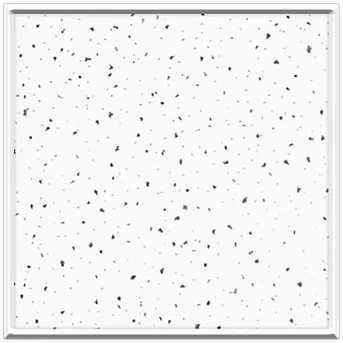- Afrikaans
- Albanian
- Amharic
- Arabic
- Armenian
- Azerbaijani
- Basque
- Belarusian
- Bengali
- Bosnian
- Bulgarian
- Catalan
- Cebuano
- Corsican
- Croatian
- Czech
- Danish
- Dutch
- English
- Esperanto
- Estonian
- French
- German
- Greek
- Hindi
- Indonesian
- irish
- Italian
- Japanese
- Korean
- Lao
- Malay
- Myanmar
- Norwegian
- Norwegian
- Polish
- Portuguese
- Romanian
- Russian
- Serbian
- Spanish
- Swedish
- Thai
- Turkish
- Ukrainian
- Uzbek
- Vietnamese
Dez . 11, 2024 11:37 Back to list
main tee ceiling grid
Understanding Main Tee Ceiling Grid A Comprehensive Guide
When designing a space, particularly in commercial and industrial settings, the ceiling often proves to be more than just a functional component. The main tee ceiling grid, a pivotal element in suspended ceiling systems, plays a crucial role in the overall aesthetics and functionality of an environment. This article will delve into the intricacies of main tee ceiling grids, their components, installation processes, benefits, and considerations.
What is a Main Tee Ceiling Grid?
A main tee ceiling grid forms the framework for a suspended ceiling. It consists of long, horizontal beams (the main tees) that support shorter cross tees, creating a grid-like structure that holds ceiling tiles or panels. The system is primarily constructed from metal, offering durability and stability. The main tees are usually spaced at either 4-foot or 5-foot intervals, depending on the design specifications.
Components of Main Tee Ceiling Grid
The main components of a main tee ceiling grid include
1. Main Tees These are the primary support beams, typically measuring 12 feet in length. They span the room's length, providing a sturdy base for the grid system.
2. Cross Tees These shorter pieces run perpendicular to the main tees and fill in the gaps to form squares or rectangles for ceiling tiles. They are usually available in lengths of 2 feet or 4 feet.
3. Wall Angles Installed along the perimeter walls, wall angles provide an anchor point for the main tees, helping to keep them level and secure.
4. Suspension Wire This wire is used to hang the grid system from the structural ceiling above. It is essential for ensuring that the grid remains stable and properly aligned.
5. Ceiling Tiles While not part of the grid itself, the ceiling tiles fit into the grid framework, providing aesthetic appeal, acoustical benefits, and insulation.
Installation Process
Installing a main tee ceiling grid requires careful planning and precision
. Here’s a brief overview of the standard steps involved in installation1. Planning and Measurement Before installation, accurate measurements of the room dimensions are necessary. This helps in determining the lengths of the main tees and cross tees needed for a proper fit.
2. Marking Layout Using chalk lines or a laser level, installers mark where the wall angles will be placed. This serves as a guide for installing the main tees.
main tee ceiling grid

3. Installing Wall Angles Wall angles are fixed to the perimeter of the room, ensuring they are level and securely attached.
4. Hanging Main Tees The main tees are then suspended from the ceiling using suspension wires. Each tee must be leveled correctly to maintain a flat ceiling.
5. Adding Cross Tees Cross tees are inserted into the main tees to create the grid pattern. They are locked into place to prevent movement.
6. Installing Ceiling Tiles Finally, ceiling tiles are placed into the grid, completing the installation of the suspended ceiling.
Benefits of Main Tee Ceiling Grids
Adopting a main tee ceiling grid system offers numerous advantages
- Versatility They can accommodate various ceiling tile types, allowing for customization in design and functionality.
- Access to Infrastructure The suspended ceiling allows for easy access to plumbing, electrical wiring, and HVAC systems without needing to remove the entire ceiling.
- Acoustic Control Many ceiling tiles used in conjunction with the grid can aid in noise reduction, which is beneficial in commercial settings.
- Aesthetic Appeal The clean lines and the ability to include different tile types elevate the visual appeal of any space.
Considerations
When choosing a main tee ceiling grid, several factors should be taken into account
- Height of the Space Ensure there is enough vertical clearance after installation. - Load Requirements Consider the weight and types of ceiling tiles to be used, as they can impact the grid's performance.
- Environmental Factors For environments with high humidity or moisture, select materials that resist corrosion and mold.
In conclusion, the main tee ceiling grid is a vital element in modern architectural design, providing functionality, aesthetic value, and practical solutions to various building challenges. By understanding its components, installation process, benefits, and considerations, designers and builders can create spaces that are not only visually appealing but also highly effective in their intended functions.
-
Transform Interiors with PVC Gypsum Ceiling: A Stylish, Durable, and Moisture-Resistant SolutionNewsMay.19,2025
-
The Smart Interior Upgrade: Discover the Durability and Versatility of Gypsum Ceiling Access Panel SolutionsNewsMay.19,2025
-
The Smart Choice for Interior Design: Discover the Value of PVC Gypsum Ceiling SolutionsNewsMay.19,2025
-
Mineral Fiber Ceiling Tiles: The Smart Blend of Performance and AestheticsNewsMay.19,2025
-
Mineral Fiber Ceiling Tiles: The Superior Choice Over Gypsum for Sound and Fire SafetyNewsMay.19,2025
-
Mineral Fiber Ceiling Tiles: Eco-Friendly Strength and Style for Every CeilingNewsMay.19,2025







